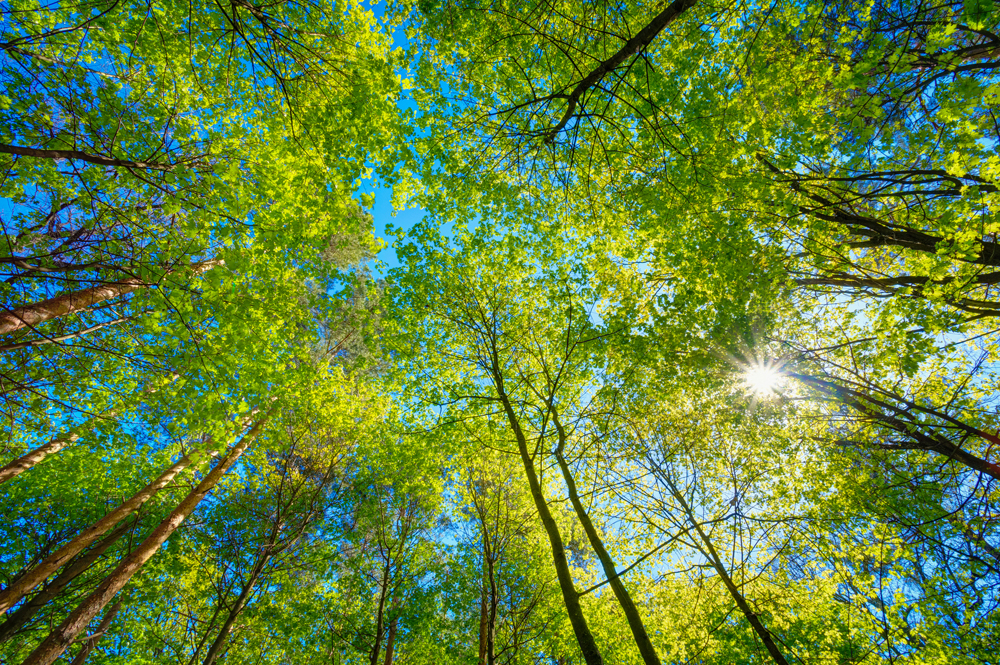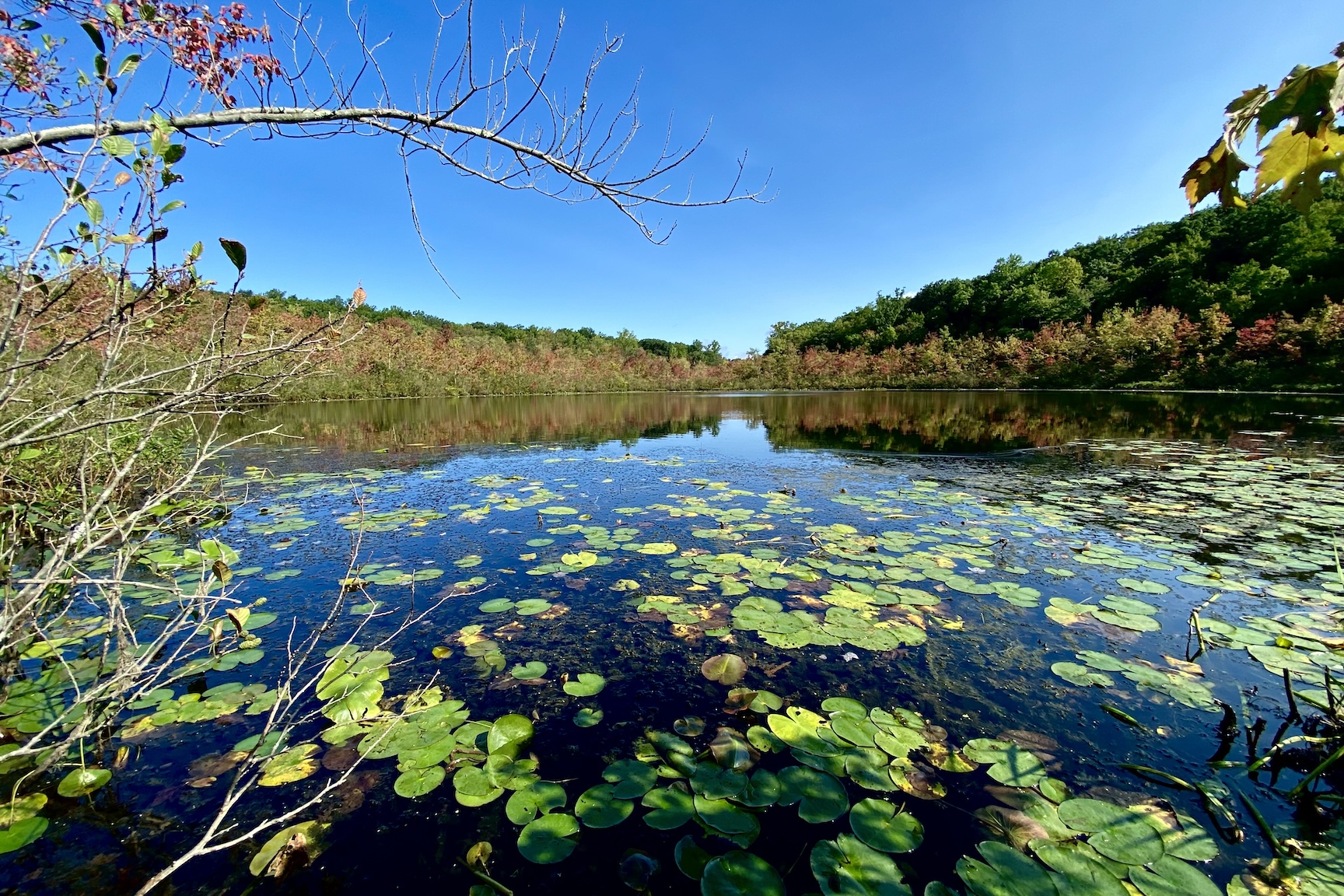We protect our land for this generation and the next
Protecting our environment is critical for a happy, healthy, and sustainable future. Environmental conservation is not only an investment in our wildlife, but in our friends, family, and future generations. Our work protects the air we breathe, the water we drink, and the soil that grows our food.
Westmoreland Sanctuary’s forests filter our air and remove pollutants such as carbon monoxide, ozone, nitrogen dioxide, sulfur dioxide, and PM2.5 (particulate matter measuring 2.5 micrometers across). All of these pollutants cause respiratory issues such as shortness of breath, respiratory infections, and asthma.
Since 1996, the first year the American Lung Association began releasing ratings, Westchester County’s air quality has received an “F” rating every year due to high ozone pollution (a main component in smog). Ozone in the stratosphere protects us from the Sun’s ultraviolet light, but when we breathe it in, it can damage our lungs.
How Can I Help?
- If you have a large property, reduce the size of your lawn and allow trees to mature. They are nature’s free air filters. If you live in an urban area and cannot grow trees in your backyard, smaller plants in pots still help.
- Try alternatives to driving such as taking public transportation/biking/walking etc. If you have to drive, try carpooling with a friend to cut your and your friend’s emissions in half.
Our water, a tributary of the Mianus River Watershed, is clean and potable (rated AA-S by the NYS Department of Environmental Conservation). It provides clean drinking water to over 100,000 homes in New York and Connecticut. We regularly test our water for chemical pollutants and conduct population surveys for indicator species (species whose presence tells us that the habitat is healthy and the water is clean). We have also initiated a Riparian Stream Habitat Restoration project (link to Conservation Islands page) that will continue to maintain our clean water and promote healthy ecosystems.
How Can I Help?
- Discontinue your use of herbicides, pesticides, and fertilizers, all of which have negative effects on human health and wildlife when consumed. Although your lawn may be far from a body of water, these chemicals still drain into the groundwater, which later becomes our drinking water.
- Instead, try using nature’s fertilizers: wood chips and leaves. Many homeowners are concerned about the appearance of leaves and branches on their lawn.
- However, you can fertilize your lawn by running over the leaves with a mower. The leaves will be chopped up into fine pieces and “disappear” into the grass.
- You can put fallen branches and trees into a wood chipper for an inexpensive and health-friendly mulch that fertilizes your garden.
- For more tips, visit our Home Stewardship & Sustainability.
A healthy soil is one that can support life. Since different habitats have different nutrient requirements, there are many different types of healthy soils. Moisture content, type of nutrients, and even the microorganisms will vary in different types of soils.
Invasive plant species are a significant threat to soil health. Invasive species are species introduced from elsewhere that spread prolifically and have harmful effects on the environment. Many invasive plants are allelopathic, which means that they release chemicals into soil which inhibit the growth of native plants. Many of our favorite foods are in fact native to the Northeast and depend on healthy soil. If you love the following foods, it is important to have healthy soil, free of invasive plants.
| ● Blueberries | ● Artichokes | ● Leeks | |||
| ● Raspberries | ● Cucumbers | ● Squash | |||
| ● Blackberries | ● Pumpkins | ● Beans | |||
| ● Maple Syrup | ● Chestnuts | ● Walnuts |
And many more!
At Westmoreland, we remove invasive plants throughout the year and replace them with native plants. We also offer home consultations and tips so you can do the same on your land.
How Can I Help?
- Learn how to identify and remove invasive plants such as garlic mustard and barberry bush, both of which are allelopathic.
- Replace these plants with native plants— a list of our favorites can be found here. This will make it more difficult for the invasive plants to grow back.
- You can use the app and website, iNaturalist, to identify plants. You take a photo and it identifies the plant for you. This will help you learn which plants are invasive.
- Discontinue your usage of pesticides and herbicides, which are effective pest and weed killers, but also kill helpful organisms in the soil.
- Instead, control weeds by pulling them up, cutting them back, or digging them up with a shovel. Digging or pulling can actually be more effective than using an herbicide. Plants store their energy in their roots and while an herbicide may kill a plant above ground, the plant can still grow back from its roots.
- For more tips, visit our Home Stewardship & Sustainability page.
Not only do trees turn carbon dioxide into oxygen, but they also sequester carbon. This means that they store carbon and prevent it from contributing to climate change. Our 640 acres of primarily forested land significantly removes greenhouse gases from the atmosphere every year, which is critical as we are located between I-684 and Route 22.
How Can I Help?
- Reduce your electricity consumption this summer by installing a heat-reflective roof or planting a tree to shade your house.
- If you have outside lights, make them motion-sensitive. You will save electricity and they will not confuse animals that use the moon to navigate.
- Start using devices that are powered with sustainable energy such as solar-powered phone chargers or hand crank-powered flashlights.
- Instead of using Google or Bing, use Ecosia. Ecosia is a web browser that uses its profits to plant trees in locations that need it the most. For every ~45 searches, Ecosia plants a tree.
Support Our Efforts

Please contact us at info@westmorelandsanctuary.org or (914) 666-8448 for more information.


